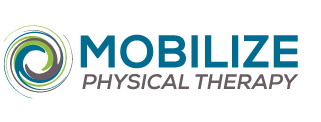My Half Marathon Journey – March Entry (Part 1)
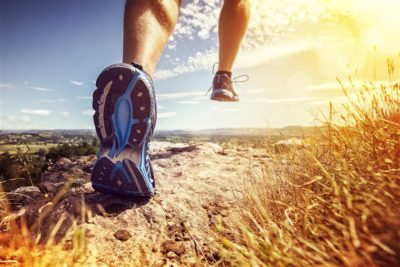
Hello Everyone! My name is Shawnee Perkins and I am a Physical Therapist with a bucket list goal of running a half marathon. Now, for the big time runners out there, this may seem like a walk in the park. For others, it could be comparable to climbing Mt. Everest. For me, running a half marathon falls somewhere in the middle.
I have never been a great runner. I would run as part of sports conditioning but never for exercise alone. I am more of a gym-goer and enjoy lifting weights and HIIT training (High Intensity Interval Training) with a focus on building strength, power, and stability. I enjoy the feeling of working hard until I drop…but in a timely manner. Endurance is not my strong suit.
About 6 years ago, while I was attending university, I had been going to the gym regularly to lift weights and attend fitness classes. The biggest drawback was TIME. It took so much time to get ready, walk across campus to the facility, put extra stuff away, before even starting my routine. Although I walked to the gym and I would occasionally ride my bike to save time, I was lacking a solid cardio routine. I wanted something easy and straight forward so that I would stay devoted to the plan. Several of my roommates were runners and it seemed so easy to just change, walk out the front door, and take off for wherever and how ever long I wanted. I made a goal to get up every morning, rain or shine, and run before classes. I set my alarm for 5:00 am and began a steady love/hate relationship with running.
Let me explain more about my background so you may understand why this is a love/hate relationship and why I am committed to this goal. I have a very long history of ankle pain resulting in additional injuries and eventually underwent two surgeries on my left foot. Running had always been a painful experience for me. During sports, I envied my teammates who were fast and could run for lengthy periods without painful consequences. I desired to run but my body held me back. This is the HATE part of this relationship. On and off throughout high school, I would try again to identify as “a runner”. I would head out for 2-3 miles, get lost in music, and let the world melt away. When I got back from a run, the following 10-15 minutes was the most rewarding exhaustion you could feel.
After a run, there was no energy left to spend on stress or worries, just energy to focus on breathing. Complete Freedom. This is the LOVE part of this relationship. However, after about 30 minutes, my ankle pain would come roaring back full force and even walking would be a challenge for the next two days. And the vicious cycle continues.
Painting a picture of the situation?
Since recovering from my last surgery four years ago, I have been working towards improving my ability to run. Specifically, running without pain. It has helped that I am now aPhysical Therapist with a better awareness of my previous faults and proper training methods. I now start small and gradually increase my distance while I continue to train for strength, stability, and flexibility. Whole body health is BETTER health. I have since ran several 5k (3.2 miles) events and even reached a period of tolerating 6 miles, but never a distance like a half marathon. I feel a full marathon may be too much for me, so my sights are set on the 13.1 miles between myself and success.
Now that you know my story and why I am determined to achieve this goal, I will be blogging monthly updates on my journey. I have entered a half marathon for August 17, 2019 and am excited to keep you all posted on things that do work, what didn’t work, what I struggle with, and what I am succeeding with. Follow the series on the Mobilize Physical Therapy Blog or Instagram page to support me and inspire yourself!
https://www.instagram.com/mobilizept/
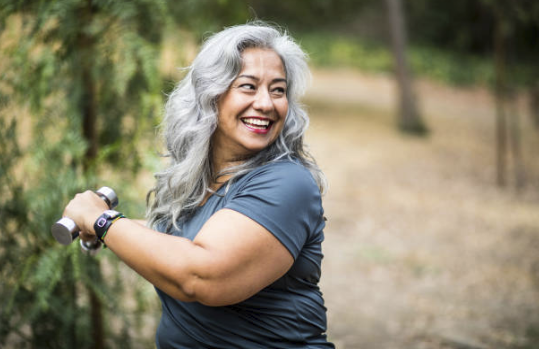
Strong at Any Age
Our bodies go through many changes as we age and it is important to take care of ourselves to keep enjoying the activities we love. One of these changes is a decrease in our BONE DENSITY. Our bones become less thick and more fragile. If our bone density gets too low, it’s called OSTEOPOROSIS. Weak bones make falls and accidents more likely to result in fractures and hospitalization. The National Osteoporosis Foundation reported 1 of 2 women and 1 of 4 men are at risk to break a bone due to osteoporosis in a lifetime.
You can prevent this and MAKE your bones STRONGER! Resistance training is a great way to increase the thickness of your bones and increase the strength of your muscles at the same time. Placing weight against your body increases the tension of the muscle on its attachment to the bone. This sparks the “rebuilding” at the bone to add more thickness and strength into the bone material.
This doesn’t mean you need to hit the gym and squat or bench press hundreds of pounds. You just need enough resistance to make your muscles work harder. The weight may need to be increased as you get stronger but the number is up to your body.
Options for resistance at home include: hand weights, resistance bands, and objects around the house of various weight. Hand weights are predictable meaning you will know exactly how much your body is lifting. Resistance bands increase tension as you pull them creating more “weight” as you move. Objects around you house are convenient. You may be unable to measure the exact weight of household items, but as long as you feel that you’re getting a work out, weight really doesn’t matter!
If you like the idea of the gym, consult a personal trainer. Most gyms have trainers available for personal training sessions or a simple introduction on how to use the machines and weights.
What ever you decide, make sure you are listening to your body and stay safe with resistance training. If you need assistance in starting resistance training or help in your control with increasing resistance, schedule an appointment at Mobilize Physical Therapy by calling (206)402-5483 or schedule online at mobilizept.com.
Informational link to fact from the National Osteoporosis Foundation:
https://cdn.nof.org/wp-content/uploads/2015/12/Osteoporosis-Fast-Facts.pdf
Common Climbing Injuries and How To Prevent Them
Most climbing injuries are caused by overuse or overloading the tissue without appropriate counterbalance strength in the body.
Most Common Injuries include:
- Belayers neck
- Rotator cuff strain
- Shoulder impingement
- Biceps tendinopathy
- Triceps tendinopathy
- Lateral epicondylitis
- Medial epicondylitis
- Carpal tunnel syndrome
- Pulley sprain
- Collateral ligament sprain
Climbing in nature is very repetitive and can lead to tightness and overuse injuries. As a general guideline to prevent overuse injuries, training should balance out and compliment the repetitions. The main muscles used while climbing that cause repetitive strain issues are:
- Finger Flexors
- Biceps
- Pectoralis muscle group
- Cervical (Neck) extensors (while belaying)
- Latissimus Dorsi
Exercises to strengthen the antagonist muscles
1.Finger extension with rubber band

2.Tricep extension with theraband
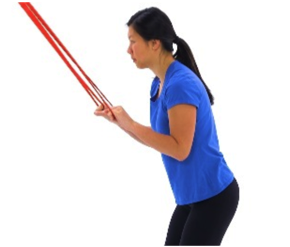
3.Periscapular strengthening Ws, Ts, Ys



4.Deep neck flexors: Chin tuck

5.Chest and lat openers

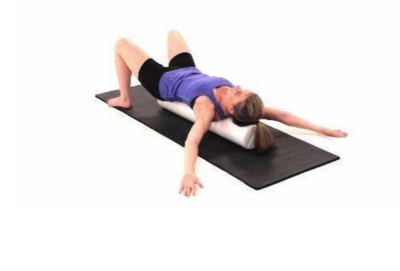
If interested in additional information, we recommend this reading suggestion:

Happy climbing!
Winter Sports and Strong Core
Winter is just around the corner and now is the time to prepare for the demands seasonal sports will expect of your body. Skiing downhill or cross country, snowboarding, snowshoeing, and ice skating are just a few winter sports that often require pre-training to maintain good technique and endurance in order to prevent injury
STRENGTH and CONTROL are two key components of a STRONG core that will keep you performing the sport you love instead of being sidelined due to injury or pain. It’s important to train your core to the LEVEL of sport demand you are performing. Here are some progressive core training exercises that can help reach higher level control.
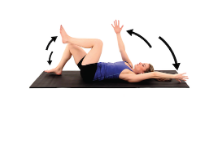
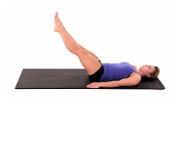
Dead Bug Leg Lifts

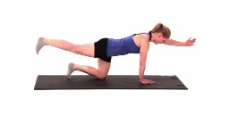
Single Leg Bridge Bird Dog
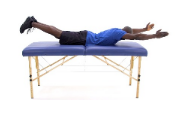
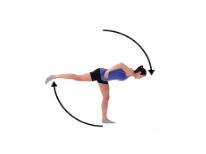
Supermans Forward T
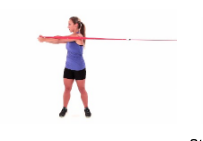
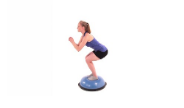
Standing Rotation Squat on Bosu Ball
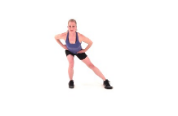
Lunge 3-Way with Slider
If you’re having difficulty with sport performance and/or experiencing pain during your sport, call us at (206) 402-5483 or visit us at mobilizept.com to set up an appointment with our physical therapy team.
Refueling After Workouts; Happy Body, Happy Brain
Working out and daily exercise does wonders for our body in staying healthy. Too often, we feel drained after workouts and struggle to perform the tasks required for our jobs or taking care of the family. How do you balance staying healthy with exercise and staying functional with the daily demands we face?
Nutrition can be that missing link to recharge your battery after “depleting” energy from a workout. There is so much out there with dieting and workouts, how do you know what is best or where to start?
There are many theories and preferences depending on goals and dietary restrictions for individuals, but if you are looking to start simple, here are some tips to improve your energy levels for the rest of your day or give you the energy needed for a late night workout.
- Protein: To maintain or gain muscles to stay strong, you need to build up what you intend to use. Protein intake throughout the day will keep you from taking energy from your muscles and intake after working out will help rebuild what you used for recovery. *General rule for intake: 0.8 g per kg of body weight, ~10-35% of daily intake.
This is a standard calculation for a moderately active individual. Depending on your workout intensity, duration, and goals, this number may increase to varying amounts.
- Carbohydrates: To maintain energy throughout the day and not take from our muscles, carbohydrates (carbs) become important for immediate energy usage. It takes longer for our body to break down protein and fats, therefore, carbs are important to sustain energy while other energy sources are depleted or to “save” protein for muscle gains.
*General rule for intake: ~45-64% of daily intake.
- Fats: Our bodies need fats! Many structures throughout our system run off fats, such as the brain. The key is to take in “healthy” fats. These products will be high in “polyunsaturated” and lower in “saturated” fats with minimal to no trans-fats.
*General rule for intake: ~20-35% of daily intake.
These recommendations are established and supported by the government and can be found with additional information at health.gov. Other resources are available at sites like choosemyplate.gov that are often used to assist in understanding balanced meal planning and suggestion for good nutrient-based food. If you have concerns regarding dietary restrictions or intolerances, contact your physician or set up an appointment with a dietician to find the right plan for you!
Stay active and Stay healthy! If you need assistance on the exercise part of health, we would love to help. Set up an appointment at mobilizept.com or call at 206-402-5483 and take a step forward toward holistic health.
How Is Your Balance?
Balance is part of everything we do on a daily basis but it is so often over-looked. We become focused on becoming “bigger, stronger, faster” that we do not realize how much poor balance control can greatly affect our ability to perform better. In order to walk, run, or jump, we much be able to control loading, take off, and landing at different speeds or surfaces. This is how training balance can adapt to your level of control and should always round out exercise programs.
Balance demands change with activity but it can also change with seasons (watch out for that ice!), increased age, and recovering from injury. How confident do you feel walking across the parking lot after work with patches of ice? Does you feel less stable now than you did 5 years ago? Do you feel less “controlled or stable” on the ankle after spraining it during that game?
Want to get “stable, controlled,…and faster”? Here are a few ways to challenge your balance to prepare you for those difficult tasks.
- Balance with feet together: add head turns, eyes closed, stand on compliant surface, ball toss
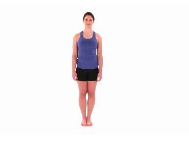
- Balance with heel-to-toe stance: add head turns, eyes closed, stand on compliant surface, ball toss
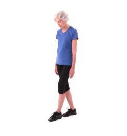
- Balance on one leg: add head turns, eyes closed, stand on compliant surface, ball toss
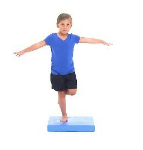
- Stair step up with opposite knee lift

- Double leg hops – forward/backward and lateral
Balance can be adapted to any environment and changed to resemble any task or sport so BE CREATIVE! Take your balance to the next level and see how things change. If you are having trouble progressing balance or reaching the level of control you desire with your activity, schedule an appointment with us at mobilizept.com or call us at 206-402-5483. We would love to help you reach your goals!
Return to Sport and Concussion Awareness
School is in and sports are in full swing! Whether you are in-season or pre-season training, concussions can happen anytime and it is important to be aware of the signs and symptoms to keep yourself and others safe.
Concussions are considered a Mild Traumatic Brain Injury and should be treated with care when returning to sports and high level activities. A concussion can be sustained by either an impact to the head or to the body resulting in a forceful motion of the head. The brain moves within the skull causing damage to tissues and chemical changes affecting the signals from the brain to other parts of the body.
According to the Zackery Lystedt Youth Sports Concussion Law, if you sustain a concussion you are required to sit out of the activity for the remainder of the day and be cleared of concussion by a medial provided prior to returning. This is for your safety to ensure you can continue playing for the season and future seasons without risking your health.
If you or your teammate falls or is involved in a collision, reports, or demonstrates any of these symptoms, be responsible and get yourself or your teammate off the field. After concussion, the brain needs time to recover like any injury. If a second concussion is sustained, but the brain has not have fully recovered, further insult to the tissues may lead to very serious consequences like permanent brain damage.
No two concussions are the same but there are common symptom you may experience and can help you know whether to sit out of practice or the rest of the game.
● Headaches
● Blurred or Double Vision
● Nausea
● Difficulty tracking objects or people with your eyes
● Sensitivity to busy environments or light
● Difficulty concentrating or retaining information
Seeking consult from a medical provider after a concussion is important. Physical Therapy may be the next step for you to return to sports. Physical therapy can work on balance control, eye coordination, and movement re-training to get you back in action without provoking symptoms.
If you need more information regarding concussion protocol, general information, referral sources, or need to start Physical Therapy, please visit our website at www.mobilizept.com to set up an appointment or call us at (206)402-5483. Our concussion specialist, Shawnee Perkins, will be happy to see you and get you on the path to recovery.
Dynamic Warm Up Before Cross Training
To optimize cross training for Neglected muscles requires the “release” of the Overused muscles. Therefore, stretching should be the first plan of attack. Typically, a dynamic warm up is best to do before exercising to loosen up muscle tension before strengthening. Try performing a sequence such as: walking high kicks, walking hamstring stretch, high knees, butt kicks, hip openers and closers, followed by a light jog. Perform each exercise for 10 repetitions.
Walking High Kicks: Keep one or both arms forward at chest level. Kick one leg forward towards your fingertips keeping the knee as straight as you can without bending your back. You should feel a quick stretch in the back of your leg.
Walking Hamstring Stretch: Step forward with one leg. Keeping the front knee straight, rock your weight onto the back leg on a slightly bent knee. Push your hips back and feel a stretch along the back of your front leg.
High Knees: Lightly jog forward while driving your knees high towards your chest.
Butt Kicks: Lightly jog forward while driving your heels towards your bottom.
Hip Openers/Closers: Take a step forward with one leg while circling the opposite leg inward and towards your chest and then opening the knee towards the outside before bring the leg back to the ground. Alternate between legs. Change direction by bringing the knee outward and towards your chest before bringing the leg back to the ground.





